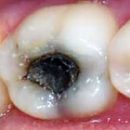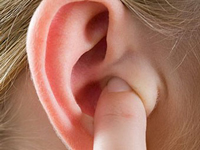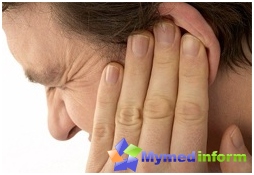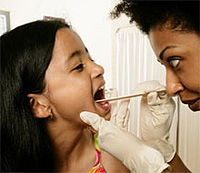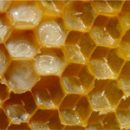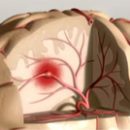What is hymoritis? Causes of inflammation of the maxillary odds. How to be treated with acute and chronic hymorite, as well as methods of diagnosis and treatment of the disease.
Content
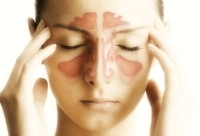 Annotation: Gaymorit — one of the most unpleasant respiratory diseases. Accompanied by inflammatory processes in the maxillary and apparel sinuses, leading to the mucous membrane and overlapping the outlet opening from the sinus to the nasal cavity. Distinguish the sharp and chronic form of the disease. With untimely or incorrect treatment, various complications are possible.
Annotation: Gaymorit — one of the most unpleasant respiratory diseases. Accompanied by inflammatory processes in the maxillary and apparel sinuses, leading to the mucous membrane and overlapping the outlet opening from the sinus to the nasal cavity. Distinguish the sharp and chronic form of the disease. With untimely or incorrect treatment, various complications are possible.
Hymorit — This is a kind of sinusitis, causing inflammation of the hymorovy (maxillary) sinuses. One of them can be amazed (then the diagnosis contains its name) or both immediately. In the sinus space accumulates the mucus, in which the accelerated reproduction of pathogenic bacteria begins. Along with the mucus, pus can occur. Pressure that occurred inside the cavity has a negative effect on the state of the vessels. In place of inflammation there are pain.
Causes of development of hymorita
The main causes of the occurrence of acute hymorite are acute respiratory infection, the spread of infection from patients with teeth or an allergic reaction. To the end, the non-cured sharp sinus is able to move into a chronic form, resulting in a long-term purulent inflammation of the maxillary sinuses.
The cause of the hymorite can also be the curvature of the nasal partition or the presence of foci of infection in the oral and nose cavity: adenoids, chronic forms of tonsillitis, rhinitis, pharyngitis, etc. The incidence rises sharply in the cold season.
Development mechanism
The main phenomenon of any form of a sinus is the clogging of the holes of the maxillary sinus, which leads to the emergence of the inflammatory process and the accumulation of pus. Such blockage may arise, for example, against the background of the occupation of the ARZ in the process of inflammation and edema of the mucous.
Symptoms and signs of hymorite
Symptoms of hymorite may vary with different forms of the disease.
Acute hymoritis
Symptoms are superimposed on the signs of ARZ provoking the disease. The following main symptoms can be distinguished:
- Increased temperature;
- chills;
- nasal congestion;
- general malaise;
- runny nose;
- sneezing.
The pain often adds to the root of the nose, forehead and teeth. Under pressure, pain is increased and its distribution to the attribute part of the face. Perhaps the appearance of edema and redness of the eyelids. The disease usually occurs within 2-3 weeks and with proper treatment ends with complete recovery.
Chronic hymorite
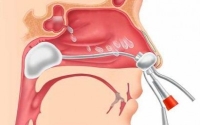 In chronic form, symptoms are less pronounced, which often leads to a delay of it to identify and start treatment. The main sign of chronic hymorite is a constant runny nose that is not disappearing in conventional treatment. Frequently observed headaches and pains localized in the depths of the eyes, amplifying when blinking. A characteristic feature of the disease is also the swelling of the eyelids in the morning. The development of conjunctivitis is a sign that the distribution of the hymorite began on the walls of the eye. The result of the treatment of chronic hymorite depends on the structural changes that have already managed to occur in the maxillary sinus, and the quality of the treatment.
In chronic form, symptoms are less pronounced, which often leads to a delay of it to identify and start treatment. The main sign of chronic hymorite is a constant runny nose that is not disappearing in conventional treatment. Frequently observed headaches and pains localized in the depths of the eyes, amplifying when blinking. A characteristic feature of the disease is also the swelling of the eyelids in the morning. The development of conjunctivitis is a sign that the distribution of the hymorite began on the walls of the eye. The result of the treatment of chronic hymorite depends on the structural changes that have already managed to occur in the maxillary sinus, and the quality of the treatment.
Complications
Sprinkle is able to give various complications to the neighboring organs of the maxillary sinus. In the propagation of infection in the cavity of the skull, meningitis or encephalitis is possible. When infecting the socket develops ophthalmite — Inflammation of the eyeball and his shells. In the overwhelming majority of cases, the cause of the development of complications becomes a refusal to treatment or non-fulfillment of all recommendations of the doctor during treatment.
Diagnosis and treatment
Acute form of the disease is quite easy to. To form an accurate diagnosis, there is enough inspection of the cavity of the nose and an x-ray examination of the facial sinuses. On X-ray pictures of the accumulation of pus in the gaymorovy and frontal sinuses looks like «Liquid level». In chronic form, computed tomography of the incompass sinuses is additionally required in order to identify foreign bodies, various polypose processes, cysts and other pathological changes.
Treatment methods
During the treatment, drugs are used, removing edema mucous membranes and accelerating the dismissal of outward congestion. With the strong development of purulent inflammation, it may be necessary to wash the method of moving fluids or using punctures. Throughout the treatment, antibiotics are accepted. The doctor, depending on the course of the disease, can also be prescribed by conciliar, antiallergic and disinfect drugs. In the event that the treatment of chronic hymorite is not amenable to therapeutic methods, surgical operation is performed.

